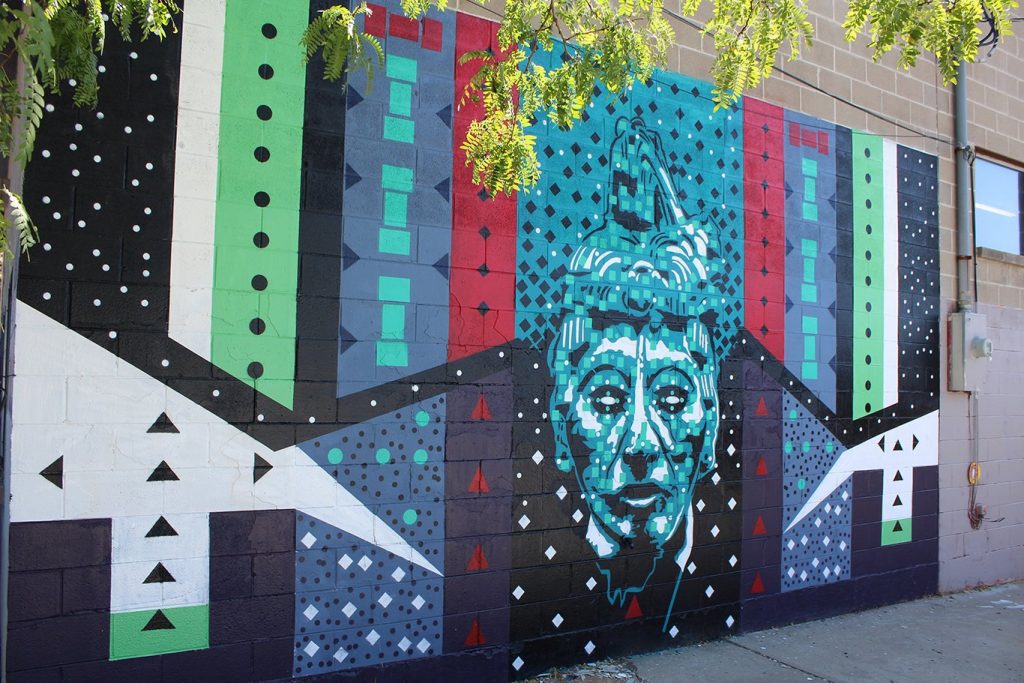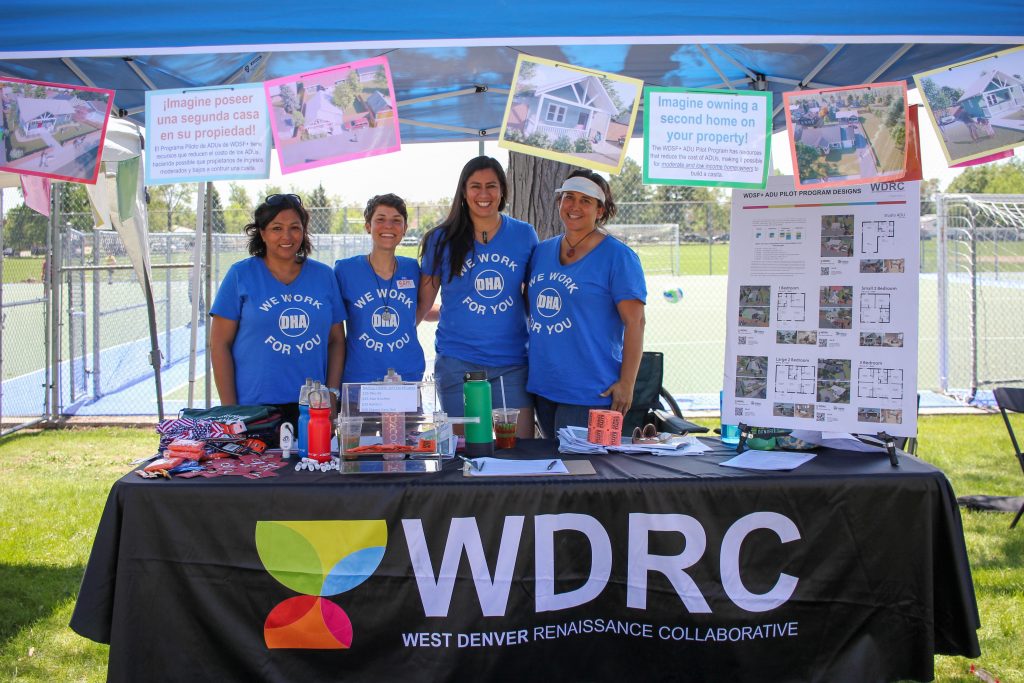
SPARCC’s flexible capital helps Denver nonprofits build wealth, stabilize neighborhoods, and minimize displacement
In the nonprofit world, it can take up to a year or more to get the money together to fund a program or development. So, when Jose Esparza, executive director of BuCu West Denver, a local economic development nonprofit, saw an opportunity to help a startup company expand in the predominantly blue-collar, Latino neighborhood of Westwood, he knew what he was up against.
A building had just become available that would be perfect for the growing bottling company, but he needed money to make an offer, and he needed to act fast.
Esparza turned to Mile High Connects, the lead organization for SPARCC Denver. Mile High Connects is a coalition of 23 philanthropic, nonprofit, and grassroots organizations in Denver that, through the SPARCC initiative, is able to offer funding and technical assistance to nonprofits. BuCu had received a $165,000 capital grant from SPARCC for a different project that was not yet under way, but Esparza wanted to divert that money for the bottling company building.
“We wanted to see the company grow and become a worker-owned business,” said Esparza. It is BuCu’s mission to support small, local businesses to benefit the local economy and their “compounding effects” on neighborhood health, he said.
The answer from SPARCC was a definitive yes. The flexibility of the grant, Esparza said, “helped us to quickly respond to an opportunity to expand production of the bottling company.”
Keeping Businesses Healthy as a Bulwark Against Cultural Gentrification
Today the bottling company is preparing to move into the new space, where it will begin bottling everything from marinara to chocolate sauces while helping small startups meet wholesalers’ demands. Its growth is the kind that BuCu would like to spearhead for other neighborhood businesses.
Another project, Mercado Lineal, is aiming to do just that. A street beautification and business development project, Mercado Lineal will become a series of small plazas and green space for pop-up businesses and others along busy Morrison Road. The project will also make the auto-centric corridor more pedestrian friendly and vibrant. Seeing the potential of Mercado Lineal to help support local businesses, the city recently passed a bond to fund two-thirds of the streetscape.
Successes like these show how community-based capital can help to prevent the cultural gentrification that happens when locally owned businesses are forced out by rising rents and development pressures.
“We want to make sure people feel this is their neighborhood,” said Esparza. When a corner store disappears along with the local barbershop and bakery, “you start to feel like you don’t belong anymore and things are changing too quickly,” he said. “We look to ownership and keeping things local to fight displacement.”
Supporting Granny Flats as a Wealth Builder
Preventing displacement—of both businesses and residents—is a mission of SPARCC and Mile High Connects as well.
“We need investment that preserves place and investment that promotes racial equity,” said Deyanira Zavala, executive director of Mile High Connects.
In Denver, SPARCC focused initially on the expanding transit system to ensure that any transit-centered development would not displace long-time residents. At the same time, the city was seeing a rapid influx of new residents. “Pressures were bubbling to a boiling point,” said Zavala.
So, the SPARCC groups turned their attention to local solutions that leveraged local assets through a partnership with the West Denver Renaissance Collaborative (WDRC), which was deploying a community-driven housing strategy to help families find extra income in their back yard and provide new affordable rental units.
Renee Martinez-Stone, WDRC director, describes that “resident leaders wanted a housing solution that stabilized homeowners, helped grow wealth, and created new affordable units to offset those lost in the wave of rapidly increasing home values and rental rates.”
Being able to remain in one’s neighborhood is critical to families as well as the area’s economic and cultural health. But as property taxes and other costs rise, families need a budget cushion to stay in their homes. Accessory dwelling units (ADUs) are one way to provide that cushion. The West Denver Single Family Plus (WDSF+) Accessory Dwelling Unit (ADU) Pilot Program creates a pathway for moderate and low-income families to participate in economic prosperity while staying in the neighborhoods they have made special. The resulting ADUs are rent-restricted and can house extended family members or be rented to bring in extra income.
SPARCC provided West Denver Renaissance Collaborative (WDRC) a $250,000 grant, which along with a Fannie Mae Sustainable Communities Challenge award, helped launch the ADU Pilot Program. The project offers participating homeowners reduced-cost ADU development (including design, permitting, and construction), personalized housing counseling, and access to new ADU financing. Participants also receive property management training.
-Deyanira Zavala
“We need investment that preserves place and investment that promotes racial equity.”
Martinez-Stone reports that WDRC has made over 1,100 points of contact through a grassroots effort to inform homeowners about the program through custom meetings, targeted postcards, and old-fashioned door-to-door outreach. “One of our key goals is to create equitable access to ADU development in a city that has seen a limited number of ADUs constructed,” she said.
“One of our key goals is to create equitable access to ADU development in a city that has seen a limited number of ADUs constructed,” she said.
WRDC has leveraged SPARCC funding by spurring new financing partners to create up to $4 million in dedicated funding for custom ADU loans.

Fighting for Racial Equity Anchors the Work
Tying all these projects together is a laser sharp focus on racial equity. After SPARCC was launched in March of 2017, residents and nonprofit organizations around the table at its six sites soon realized that racial equity must be the driving focus of their work. It would be a turning point for many.
“Why are we looking at affordable housing and these other issues?” asked Zavala. “It’s because of the racial inequity of the past and present.” It became quickly apparent that a lot of people were hungry to have that conversation about race but there was no place to have it, she said.
In Denver, that perspective is now evident in the city’s recent long-term land-use plan, Blueprint Denver. Mile High Connects was active in helping develop the plan, said Zavala.
“As the plan was wrapping up, we introduced an equity lens” through which to assess the work, she said. “We asked the community planning and development team to think of the plan’s long-term impact within that framing” to avoid unintended consequences in some of the recommendations and to highlight new solutions.
As the city’s announcement said, “For the first time — the plans consider social equity factors like vulnerability to displacement, allowing for programs and policies tailored to meet the needs of each neighborhood.”
Learning from One Another
For Esparza and others at the table, SPARCC brings another benefit—a “brain trust.” The six sites that make up SPARCC meet regularly to share ideas, successes, and hear from others doing similar work.
“It’s so valuable to understand what other cities are advancing and how they’re doing it,” Esparza said. He took home one idea from Los Angeles that has made business permitting easier for small startups along Morrison Road. And after hearing from organizers in Minneapolis, he is also promoting the Mercado Lineal as a culture district.
“We understood that culture and creativity were a value in Denver, but we didn’t understand that we need to ask our governments to be a player in this because it’s a value for the city as a whole as well,” Esparza said.
Zavala, too, sees the benefit of sharing ideas and lessons learned, but in this case, the learning goes in both directions. Mile High Connects turned to WDRC “to help us understand the landscape in West Denver. We’ve taken those lessons and showcased them in other parts of the city with similar opportunities— to share those pain points and lessons learned in ways that resonate and connect with folks,” she said.
“Vouchers of Viability”
In the end, the projects in Denver are stretching philanthropic and private-sector capital in new ways. The flexibility of the SPARCC funding helped both Esparza and WRDC’s accessory dwelling unit program. In addition, having a commitment from a national organization like SPARCC brought a different kind of capital to the table.
“It’s a voucher of viability” that the project has legs and backing, Zavala said.
The reputation of SPARCC also helped Esparza gain entrée to local and national philanthropies, he said, and leverage the money even further. “SPARCC expanded our network of connections and made getting conversations with other funders much more doable,” he said. “We were absolutely more successful because of that.” For the broader community development lending world, SPARCC’s funding flexibility is showing community development financial institutions (CDFIs) where to expand their pipeline. Community development capital typically helps build things like affordable housing or health clinics in the neighborhood. By using the money for small business development and other smaller projects, SPARCC is both expanding the use of capital and seeding a pipeline of smaller projects that benefits neighborhoods.